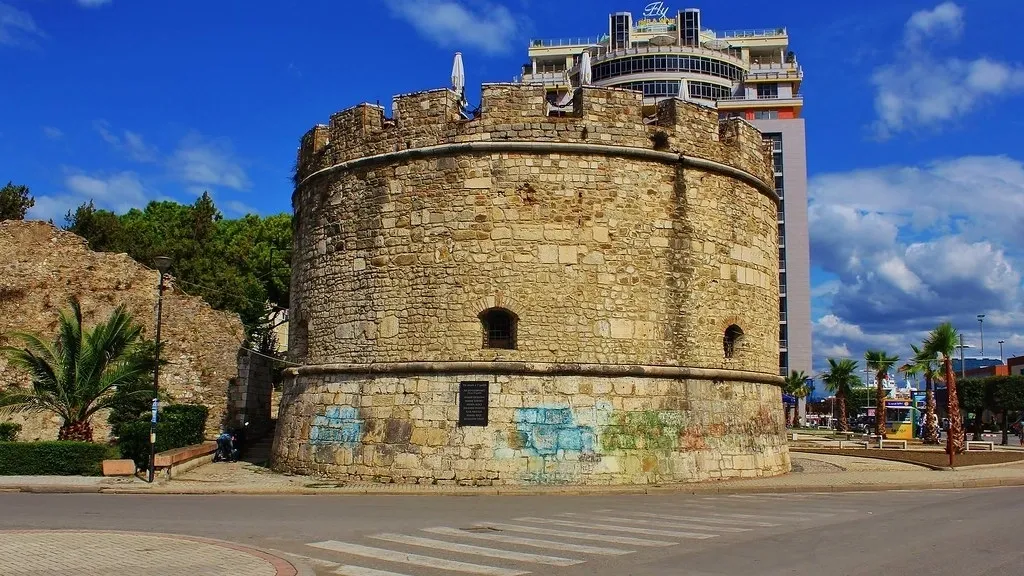Durrës Castle, also known as Kalaja e Durrësit in Albanian, is the historic fortified area of Durrës, Albania. It dates back to the late 5th century when it was initially built and has undergone repairs and enhancements over the centuries, especially during the Middle Ages and early modern periods.

Emperor Anastasius I of the Byzantine Empire commissioned the construction of this castle, which served as a symbol of his efforts to fortify his hometown of Durres. Despite its enduring strength, the castle’s ancient walls suffered damage in a powerful earthquake in 1273, leading to extensive reconstruction work.

Today, the medieval walls of the castle stand approximately 15 feet (4.6 meters) tall, boasting three entrances and fortified towers, covering about one-third of the original length. Throughout its history, the castle was further fortified with additional guard towers by the Republic of Venice and later strengthened during the Ottoman Empire’s rule in Albania.

On April 7, 1939, Albanian patriots, led by Abaz Kupi and Mujo Ulqinaku, bravely opposed the Italian invasion of Albania in Durrës. Despite their outnumbered and poorly equipped force, they valiantly resisted the Italian advance for several hours. However, when Italian light tanks entered the fray, the patriots’ defense waned, and within just five hours, Durrës succumbed entirely to the invading Italian forces.

In February 2022, the EU4Culture Group in Albania unveiled plans to restore the main tower of Durres Castle. This ambitious project, slated to last six months and costing 675,000 Euros, aims to revitalize the castle’s main tower. The restoration efforts will prioritize conserving and enhancing the tower’s infrastructure while also incorporating innovative digital and traditional interpretations. The ultimate goal is to transform the tower into Albania’s premier heritage interpretation center.


